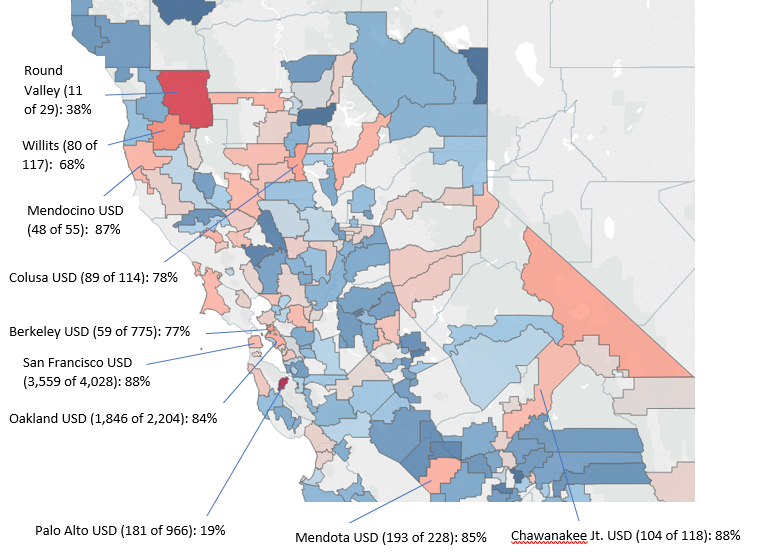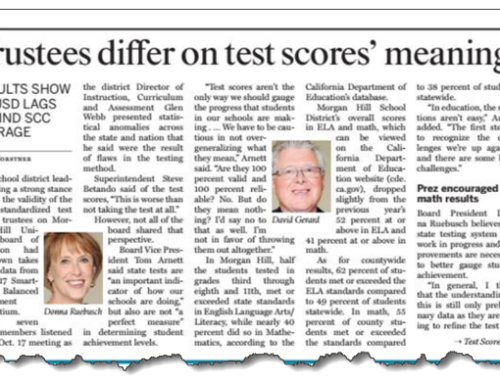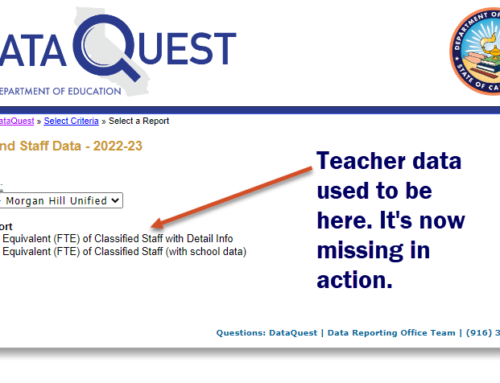We Californians would like to think we’re special. Parents and students in other states may be rebelling against the Common Core and the test that comes as its companion. But we think the rebellion can’t happen here. Well, it’s happening in parts of California … not at the scale of the “soccer mom” rebellion in New York, and not at all grade levels. But it is happening among some 11th graders. The question is: will these pockets of test refusals spread?
We looked at the English/language arts CAASPP of April 2017, drew the line at 90 percent participation, and looked at districts with 11th grade participation under that line. Then we mapped it, and discovered three findings worth sharing:
- It’s happening much more in Northern California than in Southern California.
- It’s happening in the Central Valley and the Sierra foothills.
- It’s clustered in regional pockets.
Palo Alto sticks out with a 19 percent participation rate of 11th graders.
Willits comes in next at 68 percent participation.
Berkeley and Colusa share the next position at 77 and 78 percent, respectively.
Oakland steps in next at 84 percent. (Other districts that are darker red have very low enrollments.)
Southern California districts appear below.

Unified districts in Southern California where participation by 11th graders in the CAASPP has been under 90 percent.
Take a look at the map. Any shade of pink/red indicates a participation rate lower than 90 percent. Districts that I’ve labelled are those with the lowest participation rates, with enrollment of reasonable size. We will soon be posting an interactive map you can explore.
These observations offer some precautions to those governing and leading all districts. Opposition to testing is contagious. It may spread. But it is also containable. With high school students having a personal benefit to reaching the “met standard” mark – enabling them to avoid bonehead math or English at CSU – their refusal to participate is especially troubling.
My suggestions:
- Explain to your students and the public what this CAASPP assessment is (and is not) good for;
- When talking with high school students, explain the relation of the CAASPP results to their college pathways;
- Take account of the imprecision of the CAASPP results, and factor in that imprecision when interpreting the meaning of results.
Stay tuned for interpretive help in the weeks ahead.






